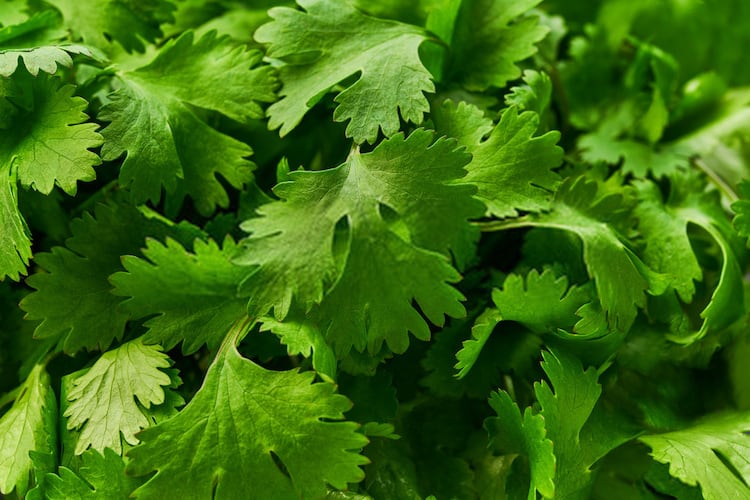If you are looking to add more greens to your diet, then cilantro is your go-to plant with any meal of choice, they fit perfectly with different dishes. This famous herb is usually served alongside lemon, eggs, beans, etc.
Although fast growing, cilantro plant is short-lived, they bolt rather quickly, leaving you with no harvest. So, having to make use of them daily may require you to visit the grocery more often or your garden every two weeks to harvest and replant seeds.
In today's guide, we will be looking at how to harvest cilantro without killing the plant for a continuous harvest.
Planting Cilantro for Continuous Harvest
So you are curious to learn how to harvest cilantro without killing the plant? That's amazing! Besides, we all want a continuous supply of this low-calorie, nutritious plant, flavorful and abundantly rich in potassium, provitamin A, and vitamin C. Without a doubt, cilantro is one of the richest plant herbs that you can grow in your garden.
But its fleeting nature can be such a killjoy. Generally, to enjoy cilantro plants, you need to practice succession planting, which is planting new seeds every two weeks. If not, they begin to bolt just when you need them the most.
I know this constant harvesting requirement frightens you, and you are asking, How do you know when and how to harvest them without killing the plant?
But before anything else, let's discuss our recommended method of planting cilantro and the best growing conditions, this will, in turn; guarantee you a smooth and elongated harvest without killing the plant.
Best location: Cilantro is a full sun-loving plant, and it tolerates light shade (8 to 10 hours) per day is standard. Ensure to give a space of about 6 to 8 inches wide between seedlings.
Soil preparation: Cilantro grows best in a well-drained large pot filled with the right potting soil mix of rich organic manure and moisture-retentive.
Cilantro thrives best in soil Ph of 6.0 to 6.7. Prepare planting beds in advance with a blend of compost, perlite, and marsh evenly. This will give the cilantro enough nutrients to grow.
Mulching helps cilantro plants to extend their harvest period. Sometimes it’s usually not the heating from the air that causes cilantro to bolt, rather than from the soil. Mulch is a protective covering that will help the soil retain moisture and keep it fresh.
Sow seeds evenly
For indoor planting start rooting seeds at about the same time as the last spring frost, so they can be ready to transplant in about four weeks. Seeds usually germinate in 10 to 14 days. Ensure not to disrupt the growing taproot.
For outdoor seed planting: Sow seeds in the garden about 2 to 3 weeks after the last spring frost, this is, so harvest comes just in time before the first hard frost. Cilantro cannot tolerate extremely cold weather.
The best way to ensure seeds are shared evenly is to shake them off an old spice container.
Planting depth: Sow cilantro seed ¼ to ½ inch deep then half-inch to an inch apart, allowing some room for the young plants to grow. Use your hands to spread out seeds evenly.
Wrap up with half an inch growing mix: When you finish packing your seeds into the soil, gently cover a half-inch planting mix.
Then water them according to their watering requirement to keep them from drying and ensure the soil is well-drained to prevent leaf spots, use a soil moisture meter for best watering practices.
In two weeks, the cilantro seeds would have germinated and start to grow.
How To Harvest Cilantro Without Killing The Plant
Your cilantro plants will be ready for harvest in 4 to 6 weeks. Once your cilantro is ready to harvest, you'll need to do it carefully.
When harvesting cilantro, it's essential not to deep cut and harvest too many stems. Such practice will slow down plant growth, and future harvest will be less. This is why knowing how to cut cilantro without killing the plant is important.
What you will need;
Sharp, clean garden scissors or shears
Harvest Period: It usually takes 3 to 4 weeks before you can harvest your first set of fresh cilantro greens. Plants mature within 60 to 70 days after sowing.
If you want to reap the coriander seed, you have to wait for 100 or more days, but it does not matter if you damage the plant, because it is already at the end of its cycle.
Instead, you can measure your cilantro leaves, and they can be harvested at any time after the plant is 6 to 8 inches tall When its height reaches 6 inches, it means that the leaves in the outer portion of the plant are matured enough to be picked.
Cilantro plants bolts quickly during the heat of summer, but by harvesting the seeds on time, you can plant a second phase crop for the fall for a continuous harvest.
Harvesting cilantro: When it comes to harvesting Cilantro, it is simple. The general rule is to cut cilantro plants about one-third of the way down.
The bottom two-thirds is usually what ensures continuous growth by producing new leaves while the top one-third is what you will use for cooking- the baby cilantro leaves have more flavor.
Cilantro plant grows from the middle and produces stems that branch out. It's always best practice to harvest only the outer stems. This will ensure the center of the plant remains undisturbed, allowing for continuous growth and harvest.
How To Cut Cilantro Without Killing The Plant | Conclusion
Cilantros are fast-growing greens that are relatively easy to maintain and harvest at your convenience.
This guide teaches you the best practices for harvesting cilantro without killing the plant, the best replanting techniques, and tips and tricks. It's also advisable to use cilantro as soon as possible after you harvest or store them properly by freezing or drying.
Gently Rinse off the stems and leaves with water. Pluck the leaves from the stem and chop off to add to your recipe.






Leave a Reply